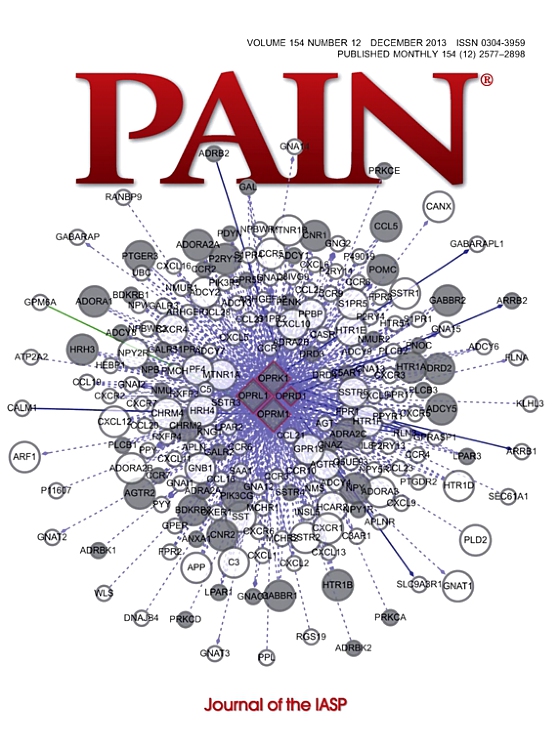Opioid dose trajectories and associations with opioid- and nonopioid-related emergency department presentations and hospital admissions.
IF 5.9
1区 医学
Q1 ANESTHESIOLOGY
引用次数: 0
Abstract
Opioid deprescribing is a key strategy for reducing opioid-related adverse effects. However, although deprescribing can be associated with clinical benefits, international studies suggest that rapid dose reduction in those on long-term opioids may be associated with poorer outcomes. This study examines the association between different opioid dose trajectories and emergency department presentations or hospital admissions related to substance use and mental health in Victoria, Australia. This is a retrospective cohort study of individuals receiving long-term opioids (at least 90 days) between January 1, 2018 and May 31, 2022, over an 18-month follow-up period. Deidentified primary care data were linked with hospital records from 3 metropolitan hospital networks in Victoria. Trajectory modelling was used to identify different prescription opioid dose patterns. Poisson regression modelling was used to examine associations between opioid dose trajectories and clinical outcomes. In total, 39,767 patients were included in the study, and 5 different opioid dose trajectories were identified, including 2 that showed a decreasing pattern. After adjusting for covariates, the incidence risk ratio of mental health-related emergency department presentations increased by 35.0% (95% confidence interval [CI] 1.108-1.645) in the "gradual decrease from intermediate dose" group, and 30.8% (95% CI 1.098-1.558) in the "rapid decrease from low dose" group, respectively, compared with the medium-stable dose trajectory. The "gradual decrease from intermediate dose" trajectory also had an increased risk of hospital admissions related to substance use (incidence risk ratio 1.568, 95% CI 1.266-1.942). A decreasing opioid dose trajectories in patients receiving long-term opioids was associated with an elevated risk of adverse clinical outcomes.阿片类药物剂量轨迹及其与阿片类药物和非阿片类药物相关的急诊科表现和住院率的关联。
阿片类药物处方是减少阿片类药物相关不良反应的关键策略。然而,尽管处方解除可能与临床获益相关,但国际研究表明,长期阿片类药物的快速剂量减少可能与较差的结果相关。本研究调查了澳大利亚维多利亚州不同阿片类药物剂量轨迹与急诊室表现或与药物使用和心理健康相关的住院之间的关系。这是一项回顾性队列研究,对2018年1月1日至2022年5月31日期间接受长期阿片类药物(至少90天)治疗的个体进行了18个月的随访。已确定的初级保健数据与维多利亚州3个大都市医院网络的医院记录相关联。使用轨迹模型来确定不同的处方阿片类药物剂量模式。泊松回归模型用于检查阿片类药物剂量轨迹与临床结果之间的关系。研究共纳入39767例患者,确定了5种不同的阿片类药物剂量轨迹,其中2种呈减少模式。调整协变量后,与中稳定剂量轨迹相比,“中剂量逐渐下降”组与精神健康相关的急诊科发病风险比分别增加了35.0%(95%可信区间[CI] 1.108-1.645)和30.8%(95%可信区间[CI] 1.098-1.558)。“从中等剂量逐渐减少”的轨迹也增加了与药物使用相关的住院风险(发生率风险比1.568,95% CI 1.266-1.942)。长期接受阿片类药物治疗的患者阿片类药物剂量轨迹的减少与不良临床结果的风险升高相关。
本文章由计算机程序翻译,如有差异,请以英文原文为准。
求助全文
约1分钟内获得全文
求助全文
来源期刊

PAIN®
医学-临床神经学
CiteScore
12.50
自引率
8.10%
发文量
242
审稿时长
9 months
期刊介绍:
PAIN® is the official publication of the International Association for the Study of Pain and publishes original research on the nature,mechanisms and treatment of pain.PAIN® provides a forum for the dissemination of research in the basic and clinical sciences of multidisciplinary interest.
 求助内容:
求助内容: 应助结果提醒方式:
应助结果提醒方式:


